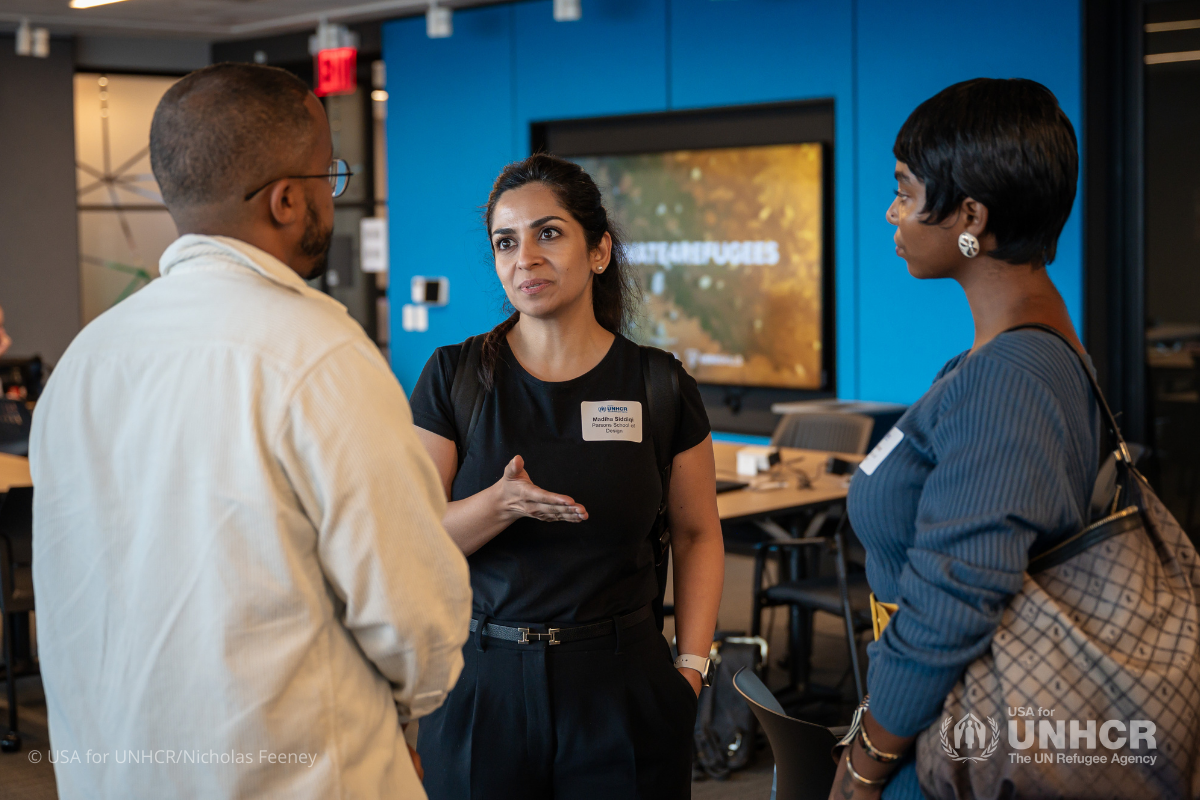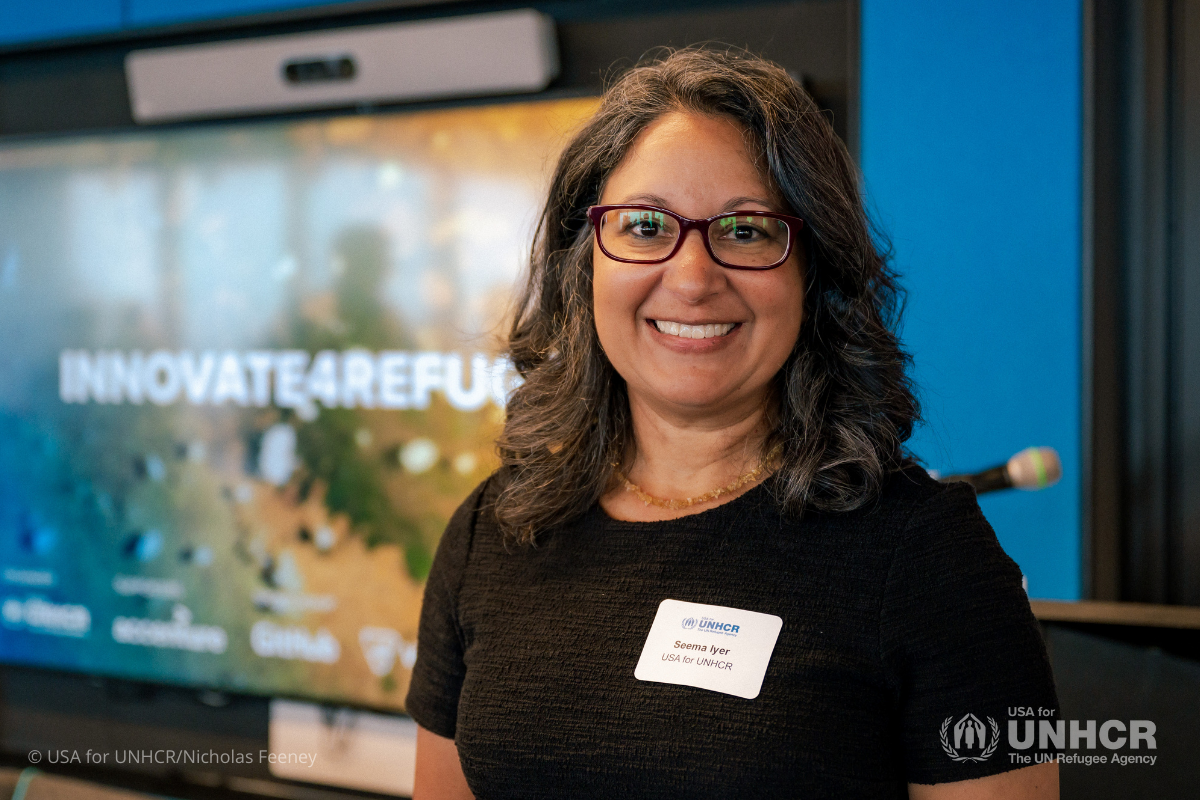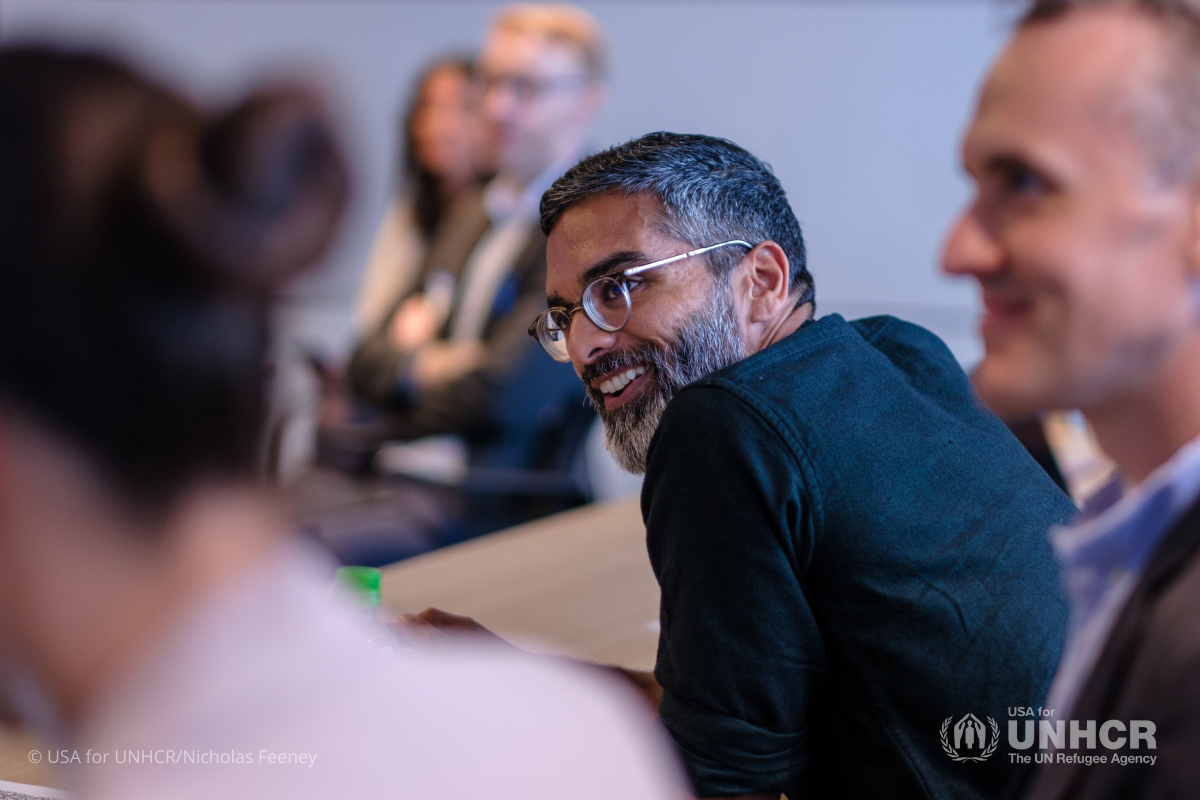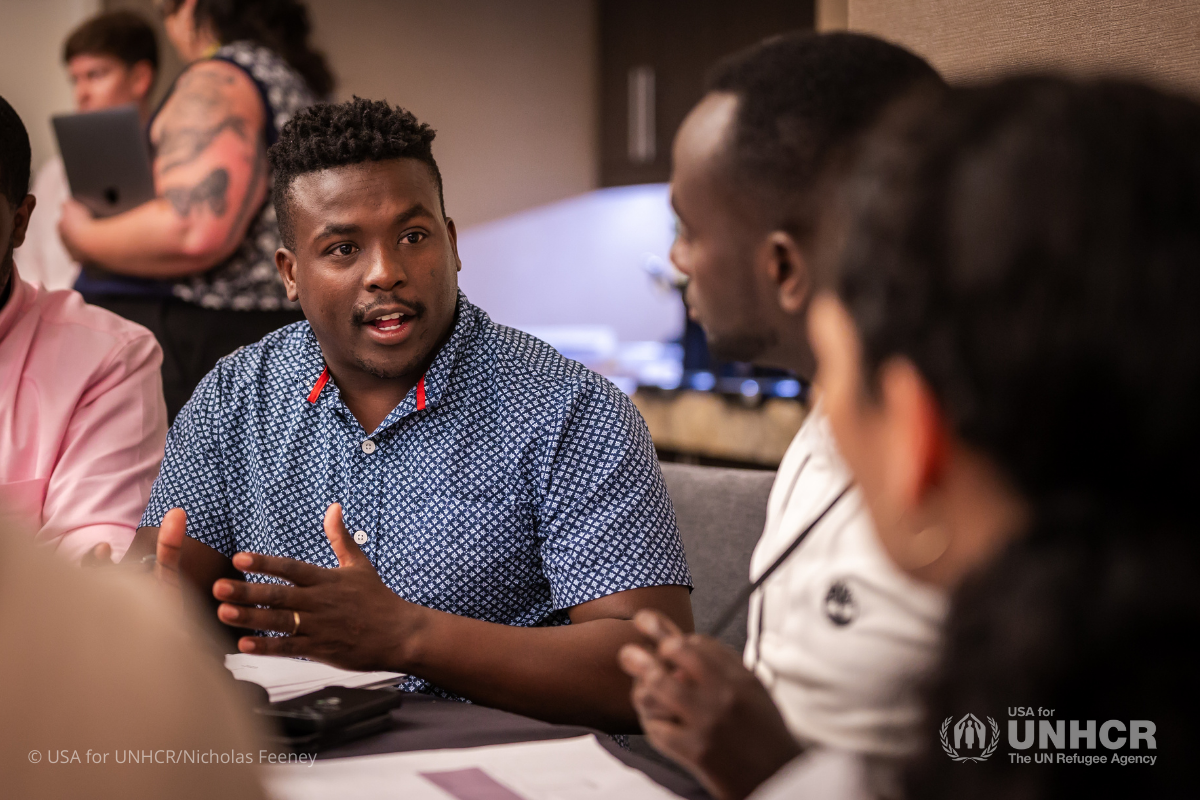Shelter and collective action take center stage at the year’s #Innovate4Refugees gathering
During the UN General Assembly week in September, the Hive, USA for UNHCR’s data science innovation lab, convened its annual event, #Innovate4Refugees, bringing technologists, corporate sector partners, UNHCR staff, philanthropists, and academics together to exchange ideas about humanitarian technology innovations and data science solutions to help protect forcibly displaced people around the world. This year’s event focused on open technology innovations for sustainable settlements and housing for refugees.
Attendees heard from UNHCR staff about the current housing needs for forcibly displaced people from UNHCR Global Shelter Cluster and UNHCR Kenya along with how private sector partners like Humanitarian Open Streetmap, GitHub and Microsoft’s AI for Good Lab are using open technologies and AI to help plan refugee settlements and housing more efficiently and effectively. John Crowley, keynote speaker and Head of U.S. Partnerships at MapAction, discussed the history of open technology in humanitarian work and how it builds collective action and intelligence.
The event started with an address from Barthelemy “Bart” Mwanza of the Global Refugee Youth Network about the importance of stable housing for refugees. Bart is a former refugee, originally from the Democratic Republic of the Congo, who was forced to flee his home and lived for more than a decade in a refugee camp in Zimbabwe.

“Having a good home contributes to the process of healing,” Bart shared, emphasizing the struggle to find safe and dignified shelter during his first days at the camp. At the camp transit center, Bart recalled multiple families had to share one shelter — curtains divided the shelter, offering little privacy and increased the risk of sexual and gender-based violence and child abuse.
In his address, Bart also noted the intersection of climate change and forced displacement, explaining that the camp in Zimbabwe is in a climate hotspot and how unstable housing contributed to distress among its residents. Many of the shelters in the camp were built with mud bricks that are susceptible to dissolving during periods of heavy rain. Plastic tarps offered little protection, and Bart shared that camp residents called these shelters “biscuits” because, during heavy rain, they would dissolve and look like melting chocolate.
“What is essential is that after these discussions, we have concrete actions and ways for implementation,” Bart shared. “What I really want to see is action; that’s how I’ll know my voice was heard.”
More than 100 people from dozens of organizations and companies from around the U.S. and globally participated at this year’s Innovate4Refugees bringing a diversity of expertise and perspectives to the day’s panels and discussions.

John Crowley of MapAction provided a deep dive into the evolution of using GIS mapping and open technologies in response to humanitarian shelter and response needs. John emphasized how open technologies can shift power structures and help build more equitable solutions since data and information can be gathered and utilized from the bottom up.
“Open source technologies are licensing structures and mechanisms of organization, but for [MapAction], they are mechanisms of collective action and collective intelligence,” John shared. “In many cases, we have implemented things and pushed tools down. Open source gives us a mechanism to build tools up.”
“The emphasis on how open technologies can shift power dynamics and lead to collective action is important to ensuring the voices of forcibly displaced people and those living in refugee camps are part of building solutions,” said Seema Iyer, Senior Director of The Hive.

The Hive, UNHCR, and its partner, Microsoft, know the benefits of this approach firsthand after recently completing a drone imagery mapping project at Kakuma refugee camp in Kenya.
“Refugees living in the camp were involved at every step of the project, from ideation to completion,” noted Iyer. “Refugee residents were trained to use open mapping technology that would not only generate critical inputs for the models but also helped them gain valuable skills for the future.”
You can watch the full recording of the 2024 #InnovateforRefugees event here.
How you can help...
UNHCR, the UN Refugee Agency, supports the full journey of refugees who have been forced to flee violence, war and persecution. Our donors help refugees in their greatest time of need with shelter, food, water and medical care, and their support builds awareness for resettled refugees living in the U.S. With your help, more refugees will have the opportunity to build peaceful lives and give their families a bright future.


